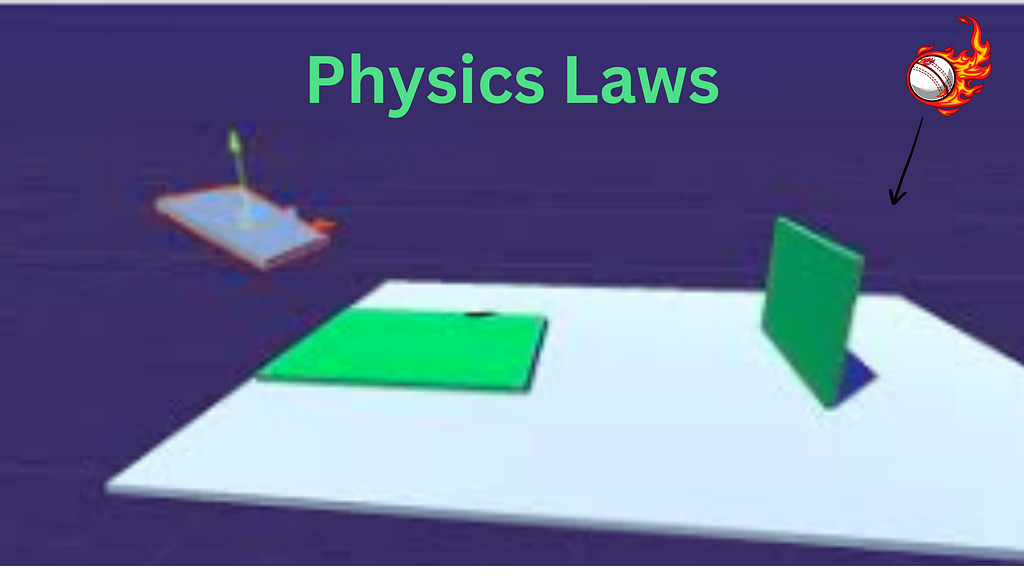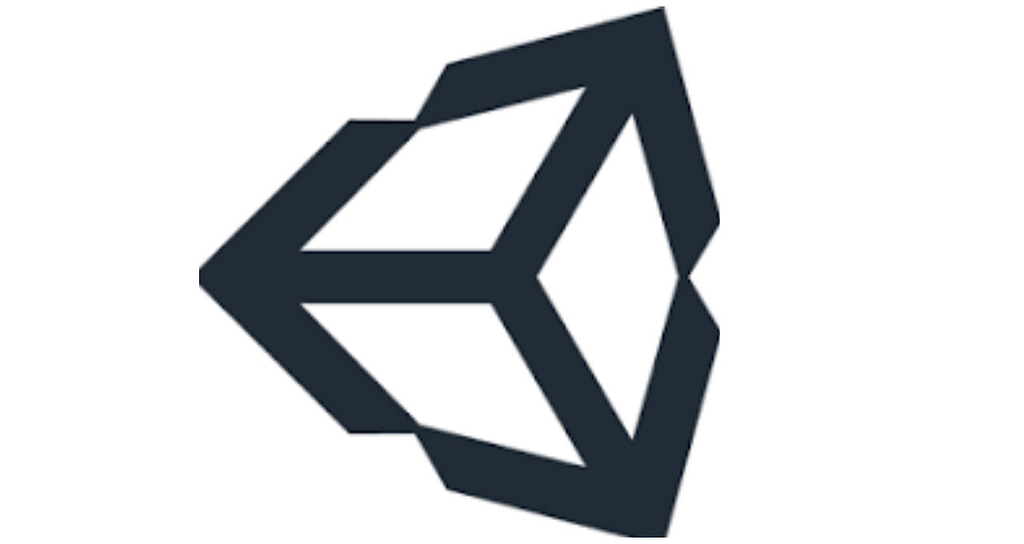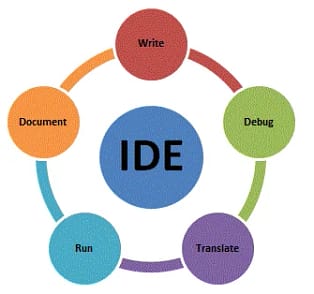Introduction to Unity Physics Engine
What is Unity Physics Engine? But before discussing this the question arises what is a physics Engine? If you don’t know what is physics engine then I will give you a basic guide a physics engine is a type of engine that works on the laws of physics such as gravity and others and by simulating them in a visual environment. But if you wanna know more then I will highly recommend you to read that blog you will find here.
In this ultimate guide, we will explore everything you need to know about Unity Physics Engine – from its foundational concepts to advanced techniques that can elevate your game development skills. So buckle up and get ready to embark on a thrilling journey through the fascinating universe of Unity Physics!
Understanding the Basics of Physics in Unity
Have you ever wondered how objects in your Unity games interact with each other like they would in the real world? That’s where the Unity Physics Engine comes into play. Understanding the basics of physics in Unity is essential for creating realistic and immersive gameplay experiences.
In Unity, physics involves concepts such as gravity, collision detection, rigid bodies, forces, and joints. Gravity affects how objects fall and move within your game environment.
Collision detection ensures that objects interact realistically when they come into contact with each other.
Rigidbodies are components that give objects mass and allow them to respond to physical forces like gravity or player input.
Forces can be applied to push or pull objects in different directions. Joints enable you to connect multiple objects to create complex interactions.
By mastering these fundamental principles of physics in Unity, you can bring your game worlds to life with dynamic movements and realistic behaviors.
Havok vs Unity Physics Engine:
Now Let’s compare the Havok Physics Engine and Unity Physics Engine:
Havok Physics Engine:
Here are something about the Havok Engine:
Purpose: Designed primarily for video games, Havok Physics handles real-time collision and dynamics of rigid bodies in three dimensions.
Features:
Robust Collision Detection: Havok provides a mature, optimized, and flexible collision detection pipeline. It supports continuous collision detection for environments, characters, and vehicles.
Constraint Solving: Havok offers stable and robust contact and constraint solving, including solutions for ragdolls and vehicles. It also supports customizable constraints and breakable constraints.
Performance: The engine is battle-tested and performs well at scale, making efficient use of CPU resources.
Integration: Havok integrates seamlessly with Unity’s Entity Component System (ECS) framework.
Advanced Debugging: It tightly integrates with the Havok Visual Debugger tool for profiling and debugging.
Use Cases: Ideal for spacious open worlds or scenes with a massive number of rigid bodies.
Unity Physics Engine:
Let us now discuss about the unity physics engine:
Built-in 3D Physics:
Engine: Unity’s built-in 3D physics engine is an integration of the PhysX engine in close partnership with NVIDIA.
Features:
Provides robust collision detection, gravity, and various forces. Supports true-to-life simulations and real-time dynamic effects.
Use Cases: Suitable for most real-time 3D scenarios.
Engine: Integrates the Box2D engine for 2D physics simulations.
Features: Handles 2D collisions, rigid bodies, and other physics interactions.
In summary, Havok Physics excels in large-scale scenarios, while Unity Physics offers flexibility and integration options for different project types.
Features and Capabilities:
The Unity Physics Engine offers a wide array of features and capabilities that make it a powerful tool for game developers.
One key feature is its ability to simulate complex interactions between objects in a virtual environment, allowing for realistic physics-based gameplay experiences.
Another notable capability of the Unity Physics Engine is its integration with other components of the Unity game development platform, such as graphics rendering and audio systems
. This seamless integration makes it easier for developers to create cohesive and immersive gaming experiences.
Furthermore, the engine provides support for various types of colliders, rigid bodies, joints, and constraints, enabling developers to create dynamic and interactive 3D worlds with ease.
Additionally, Unity’s physics engine allows for customizable properties like friction, mass, and gravity settings to fine-tune the behavior of objects within a scene.
The features and capabilities of the Unity Physics Engine empower developers to bring their creative visions to life through engaging and realistic gameplay mechanics.
Implementing Physics Interactions in Your Games
When it comes to creating engaging and realistic gameplay experiences in your games, implementing physics interactions is key. Unity Physics Engine offers a wide range of tools and features that allow developers to bring their virtual worlds to life.
By incorporating rigid bodies, colliders, and joints into your game objects, you can simulate gravity, collisions, and complex physical behaviors. This opens up endless possibilities for creating dynamic environments where objects interact with each other and respond realistically to player actions.

Whether it’s designing a puzzle game with interactive elements or a simulation game with realistic physics simulations, Unity Physics Engine provides the necessary framework to make it happen.
Experimenting with different settings and parameters can lead to innovative gameplay mechanics that surprise and delight players.
From controlling the speed of projectiles to simulating vehicle dynamics or even creating ragdoll effects for characters’ movements, mastering physics interactions in Unity can elevate your game development skills to new heights.
Common Challenges and Solutions When Using Unity Physics
Navigating the world of Unity Physics Engine comes with its set of challenges and solutions. One common challenge developers face is ensuring realistic physics interactions without compromising performance.
This balance can be achieved by optimizing collider shapes and reducing unnecessary calculations.
Another hurdle is dealing with unexpected glitches or bugs in the physics simulations. To tackle this, thorough testing and debugging are essential to identify and rectify any issues promptly. Moreover, managing complex object interactions can sometimes lead to unstable behavior in the game environment.
One solution is to simplify collision layers and constraints to streamline interactions between objects.
Additionally, keeping track of rigid body properties and adjusting them accordingly can help maintain stability in physics simulations. By addressing these challenges creatively, developers can enhance the overall gaming experience for players.
Tips for Optimizing Performance with Unity Physics
When it comes to optimizing performance with Unity Physics Engine, several key strategies can help enhance the efficiency of your game development process.
One important tip is to simplify the collision geometry of your objects, as complex shapes can significantly impact performance. Additionally, consider using Rigidbody interpolation for smoother object movement without sacrificing performance.
Another useful tip is to utilize layer-based collision detection to reduce unnecessary calculations between objects that do not interact with each other. This can help streamline the physics simulation and improve the overall gameplay experience.
Furthermore, make sure to adjust the physics settings in Unity based on your specific game requirements.
Fine-tuning parameters such as gravity, drag, and angular drag can have a significant impact on performance and realism in your game environment.
Consider implementing object pooling techniques to efficiently manage memory usage and optimize interactions between physics objects in your scenes.
By carefully considering these tips and applying them effectively in your Unity projects, you can achieve smooth gameplay experiences while maximizing performance efficiency.
Future Possibilities and Updates
Exciting possibilities lie ahead for the Unity Physics Engine as advancements in technology continue to push the boundaries of what is possible in game development. With ongoing updates and improvements, developers can expect even more realistic physics simulations and interactions in their games.
One area where we may see significant growth is in the realm of virtual reality (VR) and augmented reality (AR) experiences. Unity’s commitment to enhancing its physics engine could lead to more immersive and interactive VR environments, allowing players to engage with objects in a more lifelike manner.
Additionally, with the rise of cloud gaming platforms, there is potential for Unity Physics to evolve to support seamless multiplayer experiences with complex physics interactions across different devices
. This could open up new opportunities for collaborative gameplay on a global scale.
As technology continues to evolve at a rapid pace, it will be fascinating to see how Unity incorporates cutting-edge advancements such as machine learning and AI into its physics engine.
These developments could revolutionize the way games are designed and experienced by players worldwide.
FAQS
Have questions about Unity Physics Engine? Here are some commonly asked FAQs to help clear up any confusion you may have:
Q: Can I use Unity Physics Engine for 2D games?
A: Yes, Unity’s physics engine can be utilized for both 2D and 3D game development.
Q: Is it difficult to implement physics interactions in Unity?
A: While learning any new tool can have its challenges, Unity provides robust documentation and resources to help you master physics interactions efficiently.
Q: How can I optimize performance when using Unity Physics Engine?
A: To enhance performance, consider utilizing Rigidbody constraints, controlling the number of colliders used, and leveraging object pooling techniques.
Q: Are there future updates planned for the Unity Physics Engine?
A: As technology evolves, so does Unity. Keep an eye out for upcoming enhancements and features in future updates.
Conclusion
In the dynamic world of game development, Unity Physics Engine stands out as a powerful tool for creating realistic and immersive gaming experiences.
From understanding the basics of physics in Unity to implementing complex interactions and overcoming challenges, this guide has provided valuable insights into harnessing the full potential of Unity Physics.
By exploring its features, capabilities, and optimization tips, developers can enhance their games with seamless physics simulations. As technology advances and Unity continues to evolve, the future possibilities for Unity Physics Engine are limitless.
Whether you’re a seasoned developer or just starting on your game development journey, mastering Unity Physics Engine can elevate your projects to new heights. Stay curious, experiment boldly, and unleash your creativity with Unity’s cutting-edge physics engine. The only limit is your imagination!



